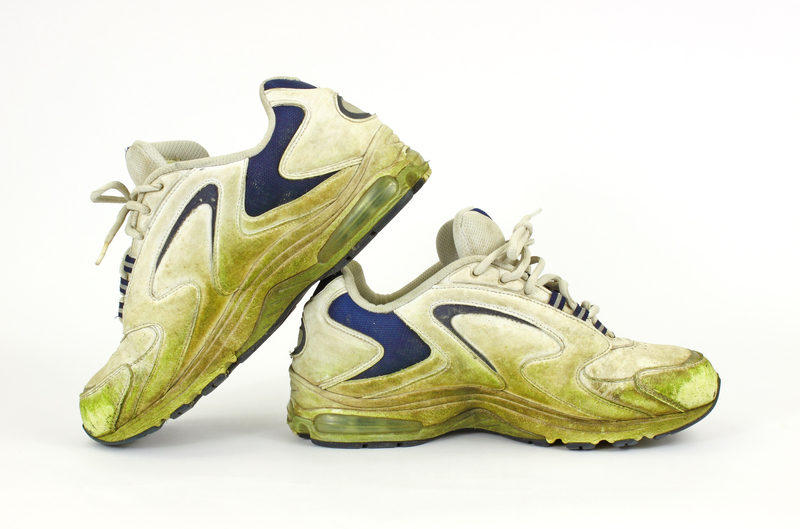Get to grips with essential ways of keeping your bathroom mold-free
Posted on 01/09/2025
Get to Grips with Essential Ways of Keeping Your Bathroom Mold-Free
Mold in the bathroom is an unsightly, unhealthy, and stubborn problem faced by countless households. Due to high humidity, limited ventilation, and the regular presence of water, bathrooms provide the ideal breeding ground for mold and mildew. If left unchecked, these unwelcome guests can damage structures, stain surfaces, ruin your decor, and negatively impact indoor air quality. Even more worrying, exposure to mold may trigger allergies, respiratory problems, and other health issues for sensitive individuals. But don't worry--removing and preventing mold doesn't have to be overwhelming!
In this comprehensive guide, we'll explore essential strategies for keeping your bathroom mold-free. You'll discover practical cleaning techniques, the best products to use, and clever life hacks that prevent mold from ever taking hold. Whether you're dealing with persistent bathroom mold or want to safeguard a newly renovated space, you'll find everything you need to create a fresh, healthy, and mold-free bathroom environment.

Understanding Bathroom Mold: Why Does It Grow?
To successfully combat mold, it's crucial to understand the conditions that encourage its growth. Mold spores are airborne microscopic fungi that settle and thrive on damp, organic surfaces. The bathroom's combination of moisture, warmth, and poor airflow makes it a notorious hotspot. Here are the main reasons why mold tends to flourish in bathrooms:
- High humidity: Showers, baths, and hot water usage create steam and vapor that linger in the air.
- Poor ventilation: Inadequate airflow prevents damp surfaces from drying quickly.
- Standing water: Water left on tiles, grout, and fixtures seeps into crevices and feeds mold.
- Organic matter: Soap scum, hair, cellulose from wallpaper or wood--these all provide nutrients to mold spores.
- Lack of sunlight: Many bathrooms are windowless, depriving them of mold-inhibiting UV rays.
If you see black or green patches in the corners of your shower, around the tub, on the grout lines, or on ceilings, these are classic signs of bathroom mold infestation. Early intervention is key to preventing further damage and restoring cleanliness.
Top Ways to Keep Your Bathroom Mold-Free
1. Improve Bathroom Ventilation
A poorly-ventilated bathroom is a surefire recipe for mold growth. As the first step, make sure your bathroom is ventilated effectively to help humidity dissipate rapidly after every shower or bath. Tips include:
- Use an exhaust fan: Always run the fan during and for at least 20 minutes after bathing. Clean the fan regularly for optimal airflow.
- Open windows: If your bathroom has windows, open them briefly after using hot water to let moist air escape.
- Leave the door open: Allow air to circulate by propping the bathroom door open after use.
- Consider a dehumidifier: In very humid climates or windowless bathrooms, a compact dehumidifier can keep moisture in check.
A simple habit of ventilating your bathroom can make a dramatic difference in keeping it mold-free naturally.
2. Control Moisture and Dampness
The next best line of defense is to stop moisture from lingering on surfaces. Here's how to dry out your bathroom efficiently:
- Wipe down tiles and shower doors: Keep a squeegee or microfiber cloth nearby and quickly wipe wet surfaces after each use.
- Fix leaks promptly: Whether it's a dripping tap, a leaky toilet base, or cracks in grout--repair leaks immediately to prevent water buildup.
- Avoid leaving wet towels and bathmats: Hang them outside to dry or wash them frequently.
- Ensure even tricky areas dry out: Grout lines, corners, and under-sink spaces are particularly vulnerable.
Regularly removing excess moisture discourages mold from settling in your bathroom, reducing the need for deep cleaning and repairs.
3. Clean Regularly with Mold-Fighting Products
Routine cleaning is critical for a mold-free bathroom. Beyond basic scrubbing, target specific areas where mold is most likely to develop:
- Use anti-mold sprays: Specialized bathroom cleaners containing bleach, hydrogen peroxide, or natural agents like tea tree oil kill mold spores before they spread.
- Scrub grout and tiles: Mold loves porous grout--use a toothbrush and baking soda paste or a commercial grout cleaner to prevent buildup.
- Focus on hidden spots: Clean around the toilet base, under sinks, shower caddies, and behind mirrors, where moisture secretly accumulates.
- Disinfect shower curtains: Wash vinyl or fabric curtains in hot water or replace them if stained.
For a more eco-friendly approach, try white vinegar--its natural acidity inhibits mold.
4. Adopt Mold-Resistant Materials
If you're renovating or updating your bathroom, consider investing in mold-resistant products for long-term protection. Superior materials can dramatically reduce the risk of mold returning:
- Choose mold-resistant paint: Specialty paints and primers contain additives that ward off fungal growth on walls and ceilings.
- Upgrade to waterproof grout and caulk: Epoxy grout and silicone-based caulk are less porous than traditional materials and better at repelling water.
- Install moisture-resistant drywall: "Greenboard" or cement board can replace regular gypsum to prevent water damage behind tiles.
- Opt for glass or acrylic shower enclosures: These are easier to clean and less prone to harboring mold compared to fabric curtains.
Such upgrades involve some up-front cost but pay off by keeping your bathroom mold-free for years.
5. Seal and Maintain All Surfaces
Even tiny cracks or gaps enable moisture to penetrate and become mold's best friend. Prevent this by:
- Inspecting caulk and grout regularly: Replace or patch any sections that appear cracked, peeled, or degraded.
- Applying a grout sealer: This waterproofs the grout, making it less porous and less attractive to mold.
- Attending to wall and ceiling paint: Peeling paint or wallpaper traps moisture and feeds mold--repair these spots swiftly.
Investing time in routine maintenance is an effective way of keeping your bathroom mold-free in the long run.
Extra Tips to Keep Bathrooms Free of Mold
- Install a timer or humidity sensor on your extractor fan: This ensures it runs long enough to clear lingering steam.
- Store toiletries neatly: Excess shampoo bottles and loofahs hold water and can develop mold underneath. Use racks and organizers that drain easily.
- Use moisture-absorbing products: Charcoal bags or silica gel containers can help absorb excess humidity in bathroom cupboards.
- Switch to bar soap: Liquid soaps and body washes often leave more residue that supports mold growth.
- Monitor for condensation: If you notice consistent fogging of mirrors and windows, it's a sign to step up ventilation and moisture control.
The Importance of Prompt Mold Removal
Despite your best efforts, minor mold growth can sometimes appear before you notice. Acting quickly is crucial:
- Clean small patches straight away: Use a mold remover or a vinegar solution, scrub thoroughly, and ventilate the area.
- For larger infestations: Mold covering more than 10 square feet, spreading behind walls, or causing a musty smell may require professional remediation.
- Don't ignore persistent problems: Mold that keeps returning may indicate hidden leaks or poor construction. Seek expert help to identify the root cause.
Early, decisive action saves time, money, and the hassle of bigger renovations down the line.
Health Risks of Ignoring Bathroom Mold
The presence of mold in your bathroom isn't just a cosmetic issue--it can endanger your household's health. Mold spores release irritants and allergens that affect air quality. Common symptoms linked to bathroom mold exposure include:
- Coughing, sneezing, asthma flare-ups
- Nasal stuffiness, wheezing
- Eye, throat, or skin irritation
- Headaches, fatigue, or difficulty breathing (especially in sensitive individuals)
People with allergies, asthma, or weakened immune systems are especially vulnerable. Keeping your bathroom free from mold is an essential part of a healthy home.

Frequently Asked Questions About Keeping Bathrooms Mold-Free
Which areas of the bathroom are most prone to mold?
Mold most often develops on grout, silicone sealant, caulking, shower doors, behind toilets, around sinks, on ceilings, and in corners where water is likely to accumulate.
What natural products can help keep the bathroom mold-free?
White vinegar, baking soda, hydrogen peroxide, and tea tree oil are all natural and effective ways of keeping your bathroom mold-free without harsh chemicals.
How often should I clean my bathroom to minimize mold?
A deep clean every week is ideal for controlling mold growth. Wipe down wet surfaces daily (especially tiles and doors) and ventilate the space after each use.
Can I paint over mold to hide it?
No. Painting over mold will not remove it--it simply covers it up, allowing the fungus to continue growing beneath. Always clean and treat the area first with a mold-killing product before repainting with mold-resistant paint.
Conclusion: Take Charge and Enjoy a Mold-Free Bathroom
Mastering the essential strategies for keeping your bathroom mold-free comes down to vigilance, routine care, and informed choices about your cleaning methods and materials. Fast action against moisture and visible mold, regular cleaning with the right products, and an investment in mold-resistant finishes will safeguard your bathroom for years to come.
By building simple habits--like ventilating, drying wet surfaces, and inspecting for leaks--you'll beat back mold and keep your bathroom sparkling clean, healthy, and inviting. Stay proactive, and treat even minor signs of mold as a call to action. Your respiratory health and peace of mind are worth the effort!
Looking for more effective ways of keeping your bathroom mold-free? Bookmark this guide and share it with anyone battling persistent bathroom dampness. A clean, fresh, and mold-free bathroom is within reach for everyone--starting today!



